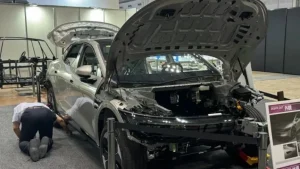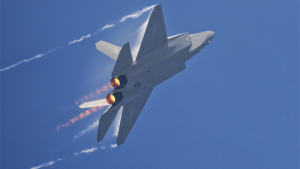India’s Best China Strategy is Faux Confrontation
French President Charles de Gaulle had a famous saying: Ordinary people can be friends, but national leaders cannot. It also means that national interests determine the relationship between countries. German media recently said that India’s elite shares Western values and will stand with the West. It’s just propaganda. The German media probably forgot that India was on the side of the Soviet Union during the Cold War.
Six Reasons for Sino-Indian Cooperation
There have been occasional frictions along the Sino-Indian border, but the reason for cooperation is because of the national interests of both sides. There are six main reasons.
(I) Both China and India are neighboring countries with nuclear weapons. They must live in harmony and cooperate. Otherwise, the consequences and costs of the conflict will be very high for both sides. No military conflict or uncontrollable military conflict is the bottom line of Sino-Indian relations. It is also a prerequisite for cooperation.
(II) Both China and India are developing countries. Developing the economy and improving people’s living standards are both sides’ highest national strategies and the greatest national interests. Moreover, since both sides are super-large-scale countries with a population of more than one billion, the difficulty of development is quite high. More resources need to be devoted to development.
Compared with China, it is more difficult for India to develop a national economy. It needs to overcome the force of habits in human history.
1. No country that has successfully risen to modernization has not experienced industrialization.
Industrialization is not only a great increase in material wealth, but also makes a country realize social transformation: from an agricultural society to an industrial society and an urban society. In this process of transformation, changes will take place in all aspects: social division of labor, technological explosion, the birth of new classes, modern political systems, and the expansion of learning opportunities. Meanwhile, the influence of religious and traditional customs will be reduced, traditional patriarchal society will disintegrate, and social mobility will be increased. Without industrialization, a country would remain in the pre-modern state of agricultural society.
But human history so far shows that only Western Europe, North America, and the temperate regions of East Asia can successfully achieve industrialization. While India is in the tropics, This is the first mindset India needs to break.
2. All developed countries, such as Britain, France, and the United States, had revolutions first and destroyed the pre-modern system.
In this process, the issue of equality between people, including equality between men and women, has been resolved, the issue of land has been resolved, and the relationship between religion and the state has been clarified (secularization). More importantly, people’s minds have changed.
However, there was no revolution in India, and the democratic system of the West was directly transplanted. Therefore, although the caste system has been abolished by law, the basis for it still exists. Like Ambedkar, the father of the Constitution, although he served as the first Minister of Justice and Chairman of the Constitution Drafting Committee after India’s independence and was responsible for drafting the first constitution, he belonged to the Dalits and was not accepted by the Indian elites. Even Gandhi, the leader of the independence movement, also supported the caste system. In the end, Ambedkar had to lead millions of Dalits to abandon Hindu beliefs and convert to Buddhism. His fate cannot be changed, let alone that of ordinary people. This is one of the reasons why India’s IT industry is particularly prosperous: because IT is a new industry, there are no restrictions on Dalits.
 Dr. Bhimrao Ramji Ambedkar, popularly known as the Father of the Indian Constitution, inspired the Dalit Buddhist movement after renouncing Hinduism. Source: Alamy Stock Photo
Dr. Bhimrao Ramji Ambedkar, popularly known as the Father of the Indian Constitution, inspired the Dalit Buddhist movement after renouncing Hinduism. Source: Alamy Stock Photo
Since India has not been impacted by the revolution and has not been able to carry out religious reforms like the West, the resistance to its development will be great. However, human history also shows that once this period has passed, it is almost impossible to make up for missed lessons. It is impossible for India today to go back to the past and start a new revolution. Therefore, India needs to modernize without a revolution. But there are no existing approaches; they can only explore themselves.
3. Human history so far has also proved that all developed countries that have successfully adopted the Westernized democratic model introduced universal suffrage after achieving modernization. The ballot is the final step in the evolution of society.
No country that implements the system of universal suffrage before the completion of modernization can get rid of poverty and move towards modernization.
Taking the Glorious Revolution in 1688 as the starting point, it took more than 200 years from the emergence of political parties to the final realization of universal suffrage in the UK. Developed countries such as the United States and France are basically the same as the UK. However, this has not happened since the complete democratization of the West. All countries in transition are accomplished by means of instant mutation or even shock. But this model is not only extremely costly, but it also often prevents a country from truly developing.
India has made great achievements since 1947, but there is still a long way to go before it is fully industrialized and modernized. It needs to overcome the three mindsets in human history.
(III) Both China and India have splendid civilizations different from those of the West, so they cannot be accepted by the West.
Before Modi visits the United States in June 2023, the Washington Post has already issued an article warning that India will not be America’s friend forever.
Therefore, whether it is China or India, it will inevitably face the containment of the West when it develops to a certain extent. This is the case for China today. Now India’s per capita GDP is about 2,300 US dollars, which is at the same level as Kenya and Congo in Africa. India cannot yet threaten the status of the West. But in the long run, it is bound to encounter China’s situation today. One way to reduce the cost of this risk is to support multipolarity.
Therefore, for China and India, a multipolar world is in the interest of both countries. In fact, China and India have already cooperated substantively in this regard. For example, India is both a member of the BRICS and a member of the Shanghai Cooperation Organization. These are the two most important organizations of emerging global forces.
In addition, after the war broke out in Ukraine, China and India had the same position, neither condemning, sanctioning, nor aiding. Additionally, according to the needs of their own countries, they purchase a large amount of Russian energy and conduct economic and trade cooperation, including transactions in their own currencies. This is all in support of a multipolar world.
There is an example of the benefits of multi-polarization for India. In July 2023, Modi was invited to participate in the National Day military parade on the Champs-Élysées, the state banquet held at the Louvre. He was also awarded the highest level of the Grand Cross of the Legion of Honor. France and India have cooperated in the fields of military, space, energy, and the environment.
 In July 2023, Indian PM Narendra Modi visited France, and Macron awarded him with the Grand Cross. . Source: X
In July 2023, Indian PM Narendra Modi visited France, and Macron awarded him with the Grand Cross. . Source: X
The purpose of France’s doing so is to balance the power of the United States and achieve strategic autonomy. Since World War II, France’s highest national strategy has been to restore its former status as a first-class power. When the national strength is relatively weak, it can only be realized by using its unique position in the external environment. During the Cold War, France established special relations with the Soviet Union and China, which confronted the United States, and became the only channel for communication between the East and the West. Entering the 21st century, as the United States treats emerging powers such as China and Russia in a manner reminiscent of its containment strategy against the Soviet Union, France continues along its established path, maintaining stable relations with them.
However, the conflict between Russia and Ukraine has caused France to lose Russia and made China the main force for it to achieve strategic autonomy. However, relying solely on China does not allow France to achieve full strategic autonomy, so India has taken Russia’s place in France’s foreign strategy. Simply put, only in a multipolar world can France play its role in uniting global middle forces to ensure its status as a first-class country.
Of course, China is also a beneficiary of multi-polarization. In April 2023, President Macron paid a successful visit to China and publicly stated that he would not decouple from China and that Taiwan was not a problem for Europe. For the same reason.
(IV) China’s continuous development meets India’s national interest. From the perspective of global geopolitics, China’s sustainable development is in line with India’s national interests.
For example, according to the Countering America’s Adversaries Through Sanctions Act, the purchase of Russian defense export equipment will trigger U.S. sanctions; even Turkey, a NATO member, is no exception. However, the special legislation of Congress only exempts India.
The key to this is the existence of China. In the context of the strategic game between China and the United States, the US will not only darg India into its camp but also indulge its challenge to Western values and interests. This is why the US turns a blind eye to India’s massive purchases of Russian oil and the increasing criticism from human rights organizations about India’s growing authoritarianism and regression.
The positive significance of China’s existence to India is also reflected in many other aspects. When the COVID-19 outbreak began in India in 2021, it first sought help from the United States but was refused. China, however, was the first to offer assistance. This aid was provided for humanitarian purposes, easing relations between the two countries. The contrast showed the unreliability of the United States. China’s aid immediately put enormous pressure on the United States to quickly join the aid ranks. This is the role of China.
Therefore, even if there are fluctuations in Sino-Indian relations, it is better than the current Sino-Canadian, Sino-British, Sino-Australian, and Sino-Japanese relations. The United States also wanted to include India in the NATO mechanism but was rejected, and India firmly held the red line. It is in India’s best interests not to confront China and to prolong the game between China and the United States. If India were to completely oppose China, it would become solely dependent on the West. Not only would it lose its ability to bargain with the West, but it would also have to pay a price to seek their support.
It can be said that India’s current significant status and value in the West, along with its favorable external environment, are largely related to China. If China stopped developing or yielded to the United States, India would lose its geopolitical advantage.
Moreover, if a confrontation occurs between China and India, it will allow the United States to weaken both its current challenger, China, and a potentially rising power, India. From this perspective, China and India should also avoid confrontation through cooperation.
Simply speaking, today’s China needs to cooperate with India to deal with the containment of the United States, and India needs to take advantage of the opportunity of the Sino-US game and cooperate with China to accelerate development.
(V) China and India are both populous countries. China and India account for more than 35% of the world’s population and more than 20% of the economy. Both countries bear a unique responsibility for addressing common challenges facing humanity.
Firstly, if China and India prioritize cooperation over competition, their stability and development will directly impact global stability and progress. Secondly, issues such as climate protection, the proliferation of weapons of mass destruction, and food crises cannot be resolved without the cooperation of China and India.
(VI) China and India are at different stages of development and have strong complementarities. Cooperation between them can result in a synergy where the whole is greater than the sum of its parts.
For example, low-carbon and green development. At present, Chinese companies control more than 80% of the world’s solar energy supply chain and 60% of manufacturing technology in the zero-emission field. The markets of China and India are huge, and the space for cooperation is unimaginable. In fact, many Chinese companies have undertaken numerous photovoltaic manufacturing plants in India, producing photovoltaic modules, inverters, and energy storage products. For instance, in 2022, a Chinese company won the cooperation of India’s Mundra solar polysilicon project, planning to produce 30,000 tons of electronic-grade polysilicon and 500 tons of silane annually. After completion, it will not change the situation of India’s lack of polysilicon production plants and will surpass Europe and South Korea in one fell swoop.
In short, although China and India have territorial disputes, both sides handle them rationally. Because of the internal and external environment, China and India must cooperate. Just like South Korea and Japan have historical issues and territorial issues, they still maintain alliance relations.
Methods for Sino-Indian Cooperation
(I) Make good use of the current shared multilateral system
First of all, China and India can make good use of the current shared multilateral system in international politics and diplomacy to promote the development of multi-polarization in the world and solve the challenges facing the world. Such as the BRICS mechanism, the Shanghai Cooperation Organization, the Asian Infrastructure Investment Bank, the G20, the WTO, etc.
The BRICS countries and the Shanghai Cooperation Organization are completely composed of emerging countries. The two sides can collaborate to promote the expansion of these two organizations and can also cooperate to promote the better functioning of these two organizations. For example, on November 21, 2023, BRICS leaders held a special video summit on the Palestine-Israel issue, which was a successful approach.
In the future, regarding the settlement of the Russia-Ukraine issue, China and India, both have good relations with Russia, will cooperate to promote the two organizations to play an active role and promote the restoration of peace as soon as possible.
The AIIB is also the most important financial institution outside the West. China and India are the first and second-largest shareholders, respectively, with important voting rights. AIIB not only has many Indian staff but also has an Indian vice president in charge of loans. Since the establishment of the AIIB, India has been the biggest beneficiary country, receiving nearly 30% of loans in the first two years of its establishment. Investment is mainly used for infrastructure construction such as electricity and transportation, which plays a major role in promoting the sustainable development of India’s economy and society. When the epidemic broke out in India in 2020, the AIIB provided India with 500 million dollars and 750 million dollars in loans, respectively, to help India fight the epidemic.
Initiated by China and with India becoming the largest beneficiary country, the AIIB proves that it is a standard non-political, multilateral development international financial institution, and it is also in line with its purpose of promoting connectivity and economic integration in Asia. Therefore, the comprehensive cooperation between China and India in the AIIB is very important to both sides. In fact, the two sides have maintained good cooperation.
In the long run, China and India’s promotion of the development and growth of the AIIB will help make up for the adverse impact of the single hegemony of the US dollar on their interests, accelerate the internationalization of their own currencies, and better defend their interests and development.
In addition, China and India, as the two largest developing countries in the world, are facing the threat of global challenges such as climate protection, the rise of populism in Europe and the United States, the trend of anti-globalization and anti-free trade, food security, the proliferation of weapons of mass destruction, terrorism, etc. Therefore, the two sides must strengthen cooperation within the current international mechanism to promote the solution of the issues. Especially in the face of the solutions proposed by the West, both China and India are facing a balance between economic development, climate protection and the fairness of responsibility. The stock of carbon emissions and the level of economic development in the West determine that it should assume greater responsibility rather than just formulating solutions based on current emissions.
(II) Vigorously carry out comprehensive economic cooperation
The cooperation between China and India involves all aspects: transportation, electricity, energy, automobiles, steel, mobile phones, medicine, fertilizers, and so on.
In 2019, India’s Namma Metro ordered 36 trains from CRRC, introducing China’s advanced technology, including driverless trains based on the Communication Train Control System (CBTC). On December 9, 2023, the first batch of 21 Chinese technicians obtained visas to India. The trains will be put into operation this year.
Electricity is the prerequisite and foundation for economic development. Over the years, Chinese companies have undertaken a large number of power plant projects in India. For example, Shanghai Electric Group signed a supply and service cooperation agreement for Sasan Power Limited in India in 2008, with a total amount of 1.311 billion dollars, and it was put into operation in 2015. In May 2023, Unit 2 of the Godda Project undertaken by a Chinese company was successfully connected to the grid once, enabling all two units of the ultra-supercritical coal-fired power station project to achieve the goal of grid-connected power generation.
From 2005 to 2015, India’s installed power capacity grew at an average annual rate of 8.4%, of which 60% of the power equipment was provided by China.
 Unit 2 of the Godda Project constructed by POWERCCHINA was successfully connected to the grid once. Source:State-owned Assets Supervision and Administration Commission of the State Council of China
Unit 2 of the Godda Project constructed by POWERCCHINA was successfully connected to the grid once. Source:State-owned Assets Supervision and Administration Commission of the State Council of China
India is now the world’s second-largest steel producer, after China. This is also an important factor in India’s industrialization. Among these, China has also played an active role. Chinese companies have undertaken the construction of many steel plants in India.
Of course, Sino-Indian cooperation is not limited to manufacturing. Both China and India are large agricultural countries with large populations, and food security and safety are important national strategic interests. It is natural for the two sides to cooperate in this regard. At present, India’s annual fertilizer demand is 35 million tons, 30% of which relies on imports. In 2022, Russia and China were India’s largest and second-largest fertilizer importers, respectively.
In 2019, China’s Wuhuan Engineering co.,ltd., a subsidiary of China National Chemical Engineering Group Co., Ltd., signed a cooperation agreement with India’s Talcher Fertilizer Co., Ltd. to build the coal-based fertilizer project with the largest production capacity per unit area in the world. It is also the first modern large-scale coal-based fertilizer project in India, with an annual output of 730,000 tons of synthetic ammonia and 1.27 million tons of urea. Urea, in particular, is equivalent to China’s annual exports to India, which will greatly enhance India’s self-sufficiency.
In addition, there is telecommunications. In 2014, 78% of Indian mobile phones were imported, and now almost all of them are made in India. In Noida, a satellite city southeast of New Delhi alone, more than 70 Chinese mobile phone manufacturers and suppliers have gathered to form the mobile phone industry chain.
Both China and India are big countries, and the areas of cooperation between the two sides will become wider and wider. In 2021, the bilateral trade between China and India will exceed the 100-billion-dollar mark for the first time. In 2022, the trade volume between China and India will reach 135.98 billion dollars. India’s deficit with China will exceed 100 billion dollars for the first time. In fiscal 2023, India’s imports of at least 25 major commodities from China, including consumer electronics, auto parts, and steel products, will have increased.
Of course, the deficit situation needs to be changed, but from another perspective, by importing relatively cheap Chinese capital products, India has saved valuable foreign exchange reserves and improved capital efficiency and many of them are intermediate products, that are produced in India and then exported to Europe and the United States.
Through the economic cooperation between China and India, it can be clearly seen that China is different from the West. China and the United States have a competitive relationship, and the United States will comprehensively contain and obstruct China’s development and will not hesitate to launch trade wars and technological wars. However, there is also a competitive relationship between China and India, but China has not contained India’s development like the United States.
(III) Promoting South-South cooperation, particularly in Africa
At present, China’s market share in Africa is 18.8%, and India’s is 5.6%, ranking first and second, respectively. France is only 4.4%; other countries are Turkey (3.2%); and Russia (2.4%). Among them, China is mainly in North Africa and West Africa, India is mainly in Southeast Africa, and Russia is mainly in Central Africa, and there is great potential for cooperation between China and India or other emerging countries. In terms of products, India’s pharmaceuticals are crucial to the health of the African people, and drug exports account for 40% of India’s exports to Africa. Among them, Chinese raw materials also play an important role.
For example, during the COVID-19 period, India’s export drug, hydroxychloroquine, was very popular. The raw material to produce this drug, called active pharmaceutical ingredient (API), was imported from China. India exports Crocin, a popular fever-reducing drug, and its active pharmaceutical ingredient, paracetamol, also comes from China. According to a statement from the Indian government, Indian drugmakers import about 70% of their bulk drugs from China. In the 2018–19 fiscal year, Indian companies imported $2.4 billion worth of bulk pharmaceuticals and intermediates from China. In 2022, 43% of India’s drug imports will come from China, and raw material drug imports will reach 70%. China-India cooperation is crucial to the health of the African people.
China, on the other hand, mainly promotes Africa’s economic development and improves people’s living standards with a large number of high-quality and low-cost industrial products.
In short, China and India are neighboring non-Western developing countries. Promoting their own development on the premise of good neighborliness and friendship is still the first goal. This also determines the stability, anti-interference, and resilience of China-India relations.




